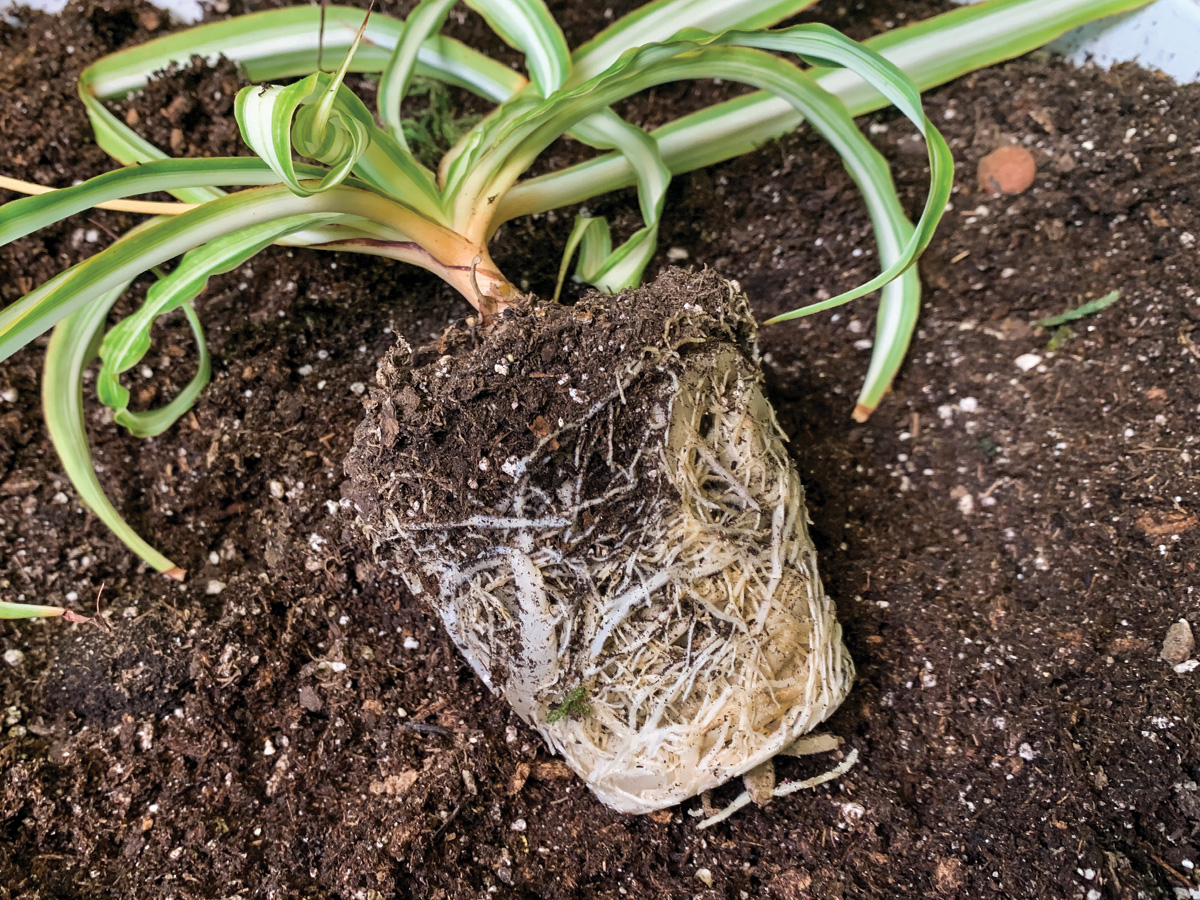Caring for your houseplants

Photo by Deborah Maier
While you have the potting mix out to start those long-season seeds like wax begonias, pansies, and onions, take some time to repot your houseplants. This month changes in sunlight levels are significant. The sun is moving higher in the sky and sunlight is coming through the windows at a sharper angle. Our houseplants will notice the change and it will trigger the start of active growth.
Getting a plant into fresh soil before it is stimulated into growth will help keep it healthy. If it is pot-bound, then increase the size of the container. Signs of a plant being pot-bound include the need for daily watering, pale leaves, or a hard soil surface. Typically, when changing the size of houseplant containers, the increase should be one size or about a finger width of additional space around all sides of the current root ball.
If the plant does not need a new pot, refreshing the soil is a good practice, especially if you notice white crusting on the soil, on the edges of the pot, or the outside of clay pots. Our hard water can cause calcium buildup in the soil. Excessive calcium can make it difficult for plants to access nutrients. The crust can also be caused by a buildup of salts from using fertilizers. Lift the plant, remove the old soil from the pot and wash it, add fresh soil, and replant.
If the plant is not pot-bound and the soil and pot are not stained with any deposits, or if it is too difficult to repot a plant because of its size or the fragile nature of its stems, then you can topdress it. In this case, sprinkle a few millimetres of worm castings over the soil.
Bags of worm castings can be purchased at most garden centres and can be as small as a litre. Worm castings are compost produced by earthworms. A little can go a long way, so you do not need a lot of it.
Fungus gnats in potting mixes are common. After refreshing the soil, use a gnat catcher—a yellow sticky paper that is used to capture flying adult gnats. Some gardeners make their own, as any yellow paper with a sticky surface can be used. Commercially prepared traps are readily available. Additionally, be sure to wash the pot saucers out as part of your houseplant care.
Not only does it make your freshly cared-for plant look tidy, but the washing removes a potential gnat food source. Letting the soil surface dry out between waterings also helps control gnats.
The plant may take a little longer to put out new roots to replace any damaged ones when repotting is done during the off-season, but the plant will be less shocked by the change. The new roots and the nutrients in the fresh soil will be there to support plant growth and blooms when it is ready to welcome the growing season.
To help prevent the buildup of fertilizer salts in houseplant soil, periodically flush the soil by placing the potted plant in a sink and water it until the water freely runs through the drain hole at the bottom. Let it sit in the sink for a while, then repeat the watering. Do it three times. Flushing the soil can be done at any time but doing it in the fall can be especially beneficial to the plant.
Regardless of the time of year, repot plants when they need it. In the past, I felt a little guilty about repotting my plants during the winter, as a lot of gardening advice recommends repotting in the spring. However, it makes sense to do it before active growth starts. I have a friend who says that she begins repotting her houseplants as a Boxing Day ritual.
